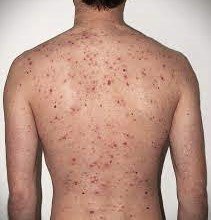Mpox, previously known as monkeypox, is a rare but serious disease caused by the monkeypox virus. It belongs to the same family as the smallpox virus, but Mpox is generally less severe. While smallpox was eradicated in the 1980s, Mpox continues to affect people, mainly in certain parts of Africa. Recently, however, since May 2022, cases have been reported in other parts of the world, making it essential for everyone to understand this disease.

What is Mpox?
Since mpox is a zoonotic illness, humans can contract it from animals. The orthopoxvirus genus, which also contains the smallpox virus, is home to the virus that causes mpox. The original name of the disease came from its discovery in monkeys. The virus comes in two main strains:
- Clade I: Found in central Africa, this strain tends to cause more severe disease.
- Clade II: Originating in west Africa, this strain is generally less severe but has been linked to recent global outbreaks.
How Does Mpox Spread?
Mpox spreads through close contact with an infected person or animal. The virus can enter the body through broken skin, the respiratory tract, or mucous membranes like the eyes, nose, or mouth. Here’s how the virus spreads:
- Animal-to-Human Transmission: This can occur if you come into contact with an infected animal, such as a monkey, rodent, or other wild animal that carries the virus. The virus can be transmitted through bites, scratches, or direct contact with the animal’s blood, bodily fluids, or lesions.
- Human-to-Human Transmission: Mpox can spread from one person to another through direct contact with infectious sores, scabs, or bodily fluids. It can also spread through respiratory droplets during close, face-to-face interactions, or through contact with contaminated objects like bedding or clothing.
- Indirect Transmission: The virus can also spread indirectly through contact with surfaces or objects that have been contaminated by an infected person or animal.
Symptoms of Mpox
The symptoms of Mpox typically appear within 5 – 21 days after exposure to the virus. The disease usually begins with flu-like symptoms, which include:
- Fever: A sudden high temperature.
- Headache: Intense and persistent headaches.
- Muscle Aches: Generalized muscle pain.
- Back Pain: Severe discomfort in the back area.
- Swollen Lymph Nodes: Enlargement of lymph nodes, particularly in the neck, armpits, or groin.
- Chills: Feeling unusually cold and shivering.
- Fatigue: Extreme tiredness and lack of energy.
After these initial symptoms, a rash develops. The rash usually starts on the face and then spreads to other parts of the body. The rash progresses through several stages:
- Macules: Flat, red spots on the skin.
- Papules: Raised, firm, and painful lesions.
- Vesicles: Small blisters filled with clear fluid.
- Pustules: Blisters filled with pus.
- Scabs: The lesions eventually dry up and form scabs that later fall off.
The rash can appear on the face, hands, feet, and genital area. It can also spread to the mouth, eyes, and other parts of the body. The rash can be painful, and the process from the first appearance of the rash to the formation of scabs can take two to four weeks.
Who is Most at Risk?
While anyone can get Mpox, certain groups are more vulnerable:
- Children: In Africa, most Mpox cases occur in children under 15 years old.
- Men Who Have Sex with Men (MSM): Recent global outbreaks have seen a higher incidence of Mpox among this group.
- People with Weakened Immune Systems: Individuals with compromised immune systems may experience more severe symptoms and complications.
How is Mpox Diagnosed?
Mpox can be challenging to diagnose because its symptoms are similar to those of other illnesses like chickenpox, measles, or bacterial skin infections. However, there are specific methods to confirm the diagnosis:
- Polymerase Chain Reaction (PCR) Test: The most reliable test for diagnosing Mpox. A healthcare provider will take a sample from one of the skin lesions and send it to a lab for testing. The PCR test identifies the genetic material of the virus.
- Blood Tests: Blood tests can detect the presence of the virus or the antibodies your body produces in response to the infection.
Treatment for Mpox
There is no specific cure for Mpox, but most people recover without needing special treatment. Treatment mainly focuses on relieving symptoms and preventing complications:
- Supportive Care: This includes managing symptoms like fever and pain, keeping the patient hydrated, and ensuring they receive proper nutrition.
- Antibiotics: If a secondary bacterial infection develops, antibiotics may be prescribed to treat it.
- Antiviral Medications: In severe cases, antiviral drugs like cidofovir or tecovirimat may be used. These drugs are typically used for other viral infections, but they may help in treating severe Mpox cases.
Preventing Mpox
Preventing the spread of Mpox requires a combination of strategies. Here’s how you can protect yourself and others:
- Vaccination: Vaccines that were originally developed for smallpox also offer protection against Mpox. These vaccines are recommended for people at high risk, such as healthcare workers and those who have been in close contact with an infected person.
- Avoiding Contact with Infected Animals: Avoid direct contact with animals that might carry the virus, especially sick or dead animals. It’s also important to cook all animal products thoroughly before eating.
- Practicing Safe Hygiene: Wash your hands regularly with soap and water, especially after handling animals, raw meat, or contaminated materials. Use alcohol-based hand sanitizer if soap and water are not available.
- Reducing Human-to-Human Transmission: To minimize the risk of spreading Mpox:
- Avoid close contact with people who are infected.
- Use personal protective equipment (PPE), such as gloves and masks, when caring for someone with Mpox.
- Disinfect surfaces and objects that may have come into contact with the virus.
- Safe Sex Practices: Using condoms and dental dams can reduce the risk of transmission during sexual activity. It’s also advisable to limit the number of sexual partners to reduce the risk of exposure.
Vaccines for Mpox

There are currently three vaccines available for Mpox, although they are in limited supply. These vaccines are recommended for:
- Healthcare Workers: Those on the front lines of treating Mpox patients.
- Close Contacts of Infected Individuals: Family members, partners, and others who have been in close contact with someone who has Mpox.
- Men Who Have Sex with Men (MSM): Particularly those who have had multiple sexual partners or have been in settings where Mpox is spreading.
What to Do if You Suspect Mpox
If you think you have been exposed to Mpox or are experiencing symptoms, it’s important to take action quickly:
- Isolate Yourself: Stay away from others to prevent spreading the virus.
- Seek Medical Attention: Contact a healthcare provider for advice and testing. Early diagnosis can help manage symptoms and reduce the risk of complications.
- Notify Close Contacts: Inform anyone you have been in close contact with so they can monitor their health and take precautions.
The Importance of Awareness and Education
Raising awareness about Mpox is crucial for controlling its spread. Educating the public, healthcare providers, and communities about how Mpox spreads, its symptoms, and prevention methods can help reduce the number of cases and protect at-risk populations.
Conclusion
Mpox is a serious disease, but it is manageable with the right knowledge and precautions. By understanding how it spreads, recognizing the symptoms, and following preventive measures, you can protect yourself and those around you. Stay informed, practice good hygiene, and seek medical advice if you suspect you have Mpox. Together, we can work towards reducing the impact of this disease and preventing future outbreaks.